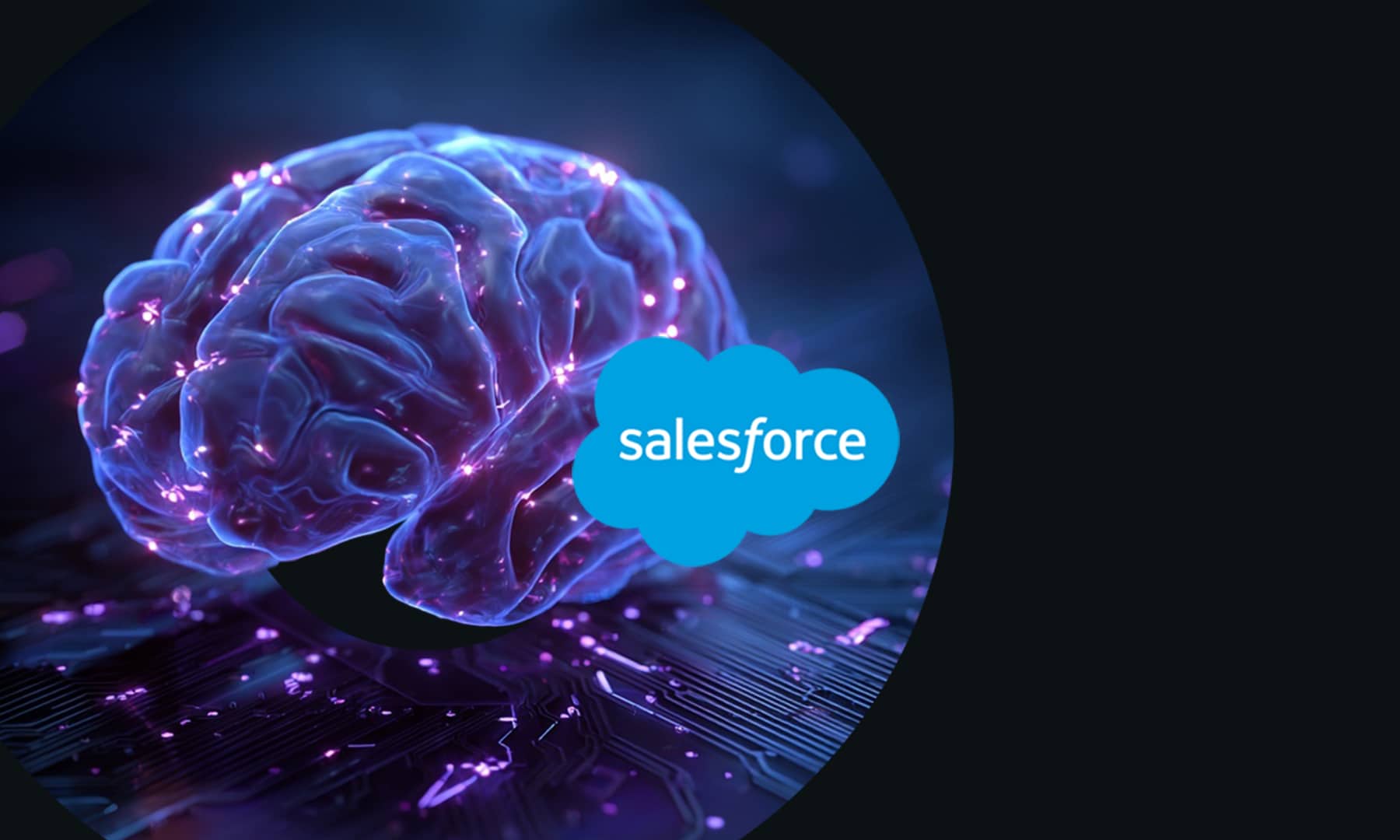From Dreamforce to Operations: A Complete Guide to Engaging Your Teams Around Agentic AI
Every year, Dreamforce energizes teams with spectacular tech announcements. But turning that enthusiasm into concrete adoption remains the biggest challenge for IT, CRM, and business leaders.

With the arrival of Agentforce 360 and agentic AI, the promise is immense: autonomous agents that reason, act, and collaborate. Yet without a clear engagement method, this ambition risks remaining unfulfilled.
This article offers an operational action plan to mobilize your teams and drive the adoption of Agentforce 360 with impact, while laying the groundwork for future events that will embed this momentum within your organization.
Why the Adoption of Agentic AI Is First an Engagement Issue, Not a Technological One
The excitement around Agentforce 360 at Dreamforce 2025 is undeniable: autonomous agents capable of resolving customer cases, qualifying leads, or orchestrating business workflows without human intervention. However, the reality in the field is more nuanced. Organizations face organizational and cultural barriers long before they encounter technical ones.
The five typical barriers to adoption include:
- Lack of alignment between IT and business teams on priority use cases,
- Blurry governance leaving room for shadow IT or ethical drift,
- Lack of skills in prompt engineering and agent orchestration,
- Legitimate concerns about hallucinations and regulatory compliance,
- And finally, the inability to quickly measure ROI, which erodes executive sponsor confidence.
Dreamforce acts as a catalyst for intentions but doesn’t provide the operational recipe for turning those intentions into measurable results. That’s precisely where engagement methods become decisive: turning curiosity into competence, experimentation into structured pilots, and temporary enthusiasm into a lasting collective dynamic.
3 Concrete Methods to Engage Your Teams in the Adoption of Agentforce 360
Method 1: Business Value–Oriented Hackathon
A hackathon isn’t a team-building gimmick but a strategic accelerator to quickly identify high-impact use cases, build expertise on Agentforce 360, and create a pool of internal champions. At Dreamforce, Salesforce organized 36-hour hackathons where 45 teams built operational agents, with prizes up to $100,000. The goal: turn exploration into tangible, tested prototypes presented before decision-makers.
Mini-example: A bank organizes a 48-hour internal hackathon with 8 mixed teams (business + IT) to design Agentforce 360 agents. The winning project? A mortgage qualification agent that reduces processing time by 40% by automating document collection and risk pre-analysis, while escalating complex cases to a human advisor.
Three Actionable Steps:
- Upfront framing (D-14): Select 3–5 priority business issues, form mixed teams (3–5 people), and provide preconfigured Agentforce 360 sandboxes with access to Builder, Testing Center, and anonymized data.
- Hackathon format (48 hours): Day 1 — ideation, agent design, and build in Builder; Day 2 — automated testing, adjustments, and a 10-minute pitch before a jury of business and IT sponsors, with a live agent demo.
- Post-hackathon (following week): Select 2–3 most promising projects, allocate pilot budgets, and assign a product owner to transform the prototype into an industrializable solution within 60 days.
Method 2: Agentforce 360 Champions and Ambassadors Program
Adoption cannot be mandated, it spreads. A champions program structures that momentum by identifying internal “Agentblazers”, enthusiastic, influential employees who become relays, trainers, and spokespeople for agentic transformation. These champions get early access to training, join communities of practice, and receive formal recognition (certifications, internal visibility, event participation).
Mini-example: A retailer identifies 8 champions (2 in marketing, 2 in sales, 2 in customer service, 2 in IT) after a hackathon. Each champion leads a monthly “Agentforce 360 in Action” workshop in their BU, shares feedback, and collects field pain points to feed the internal product roadmap. Result: adoption rate tripled in 6 months.
Three Actionable Steps:
- Selection (week 1): Identify 10–20 profiles who participated in the hackathon, showing technical curiosity and informal leadership, and invite them officially with executive sponsorship.
- Tools and rituals (weeks 2–4): Create a dedicated Slack/Teams space, organize a 2-day deep-dive training on Agent Script and Observability, and set up biweekly “office hours” with the IT team.
- Recognition and amplification (ongoing): Publish internal success stories with video testimonials, offer free Agentforce 360 certifications, and invite champions to co-host sessions at future events.
Method 3: Structured, Measured Pilots with Clear Cut-Offs
Endless experimentation kills adoption. A structured pilot defines upfront: a limited business scope (1 team, 1 process, 1 geography), quantified value hypotheses (e.g., “Reduce average processing time by 30%”), measurable KPIs, a fixed duration (30–60 days), and a go/no-go criterion for industrialization. This framework turns the pilot into structured learning, not a zombie project.
Mini-example: A SaaS provider pilots an Agentforce 360 support agent with one 10-person team for 45 days. Hypothesis: the agent resolves 40% of level-1 tickets without escalation. KPIs: autonomous resolution rate, average resolution time, customer satisfaction (CSAT), escalation rate. Result after 45 days: 52% autonomous resolution, stable CSAT, and decision to scale to 3 more teams.
Three Actionable Steps:
- Framing hypotheses and KPIs (week 1): Co-build value hypotheses with business stakeholders, define 3–5 KPIs with current baselines, and document success/failure conditions in a one-pager validated by the sponsor.
- Execution and monitoring (weeks 2–6): Deploy the agent in the limited scope, monitor daily via Agentforce 360 Observability, and hold weekly stand-ups with the pilot team to adjust prompts and fix bugs.
- Cut-off and extension decision (weeks 7–8): Analyze final KPIs vs. baseline, present results to the steering committee, and decide: go (scale-up with industrialization plan), pivot (adjust use case), or stop (terminate without blame, document lessons).
Data 360: The Invisible but Indispensable Foundation of Agentforce
All these adoption methods rest on one non-negotiable prerequisite: Data 360, the evolution of Data Cloud presented at Dreamforce 2025. Without unified, clean, real-time data, Agentforce cannot reason accurately or ensure compliance. Implementing this foundation is a strategic initiative in itself, with its own challenges of governance, integration, and data quality. A future article will detail how to build this data backbone, because without trusted data, there are no trusted agents.
Turn Dreamforce Momentum into Lasting Impact
Agentic AI and Agentforce 360 are not just technological innovations: they redefine how teams collaborate, make decisions, and create value. But this transformation won’t happen by decree or post-Dreamforce enthusiasm alone. It requires a structured engagement method, measurable quick wins, and a collective dynamic driven by internal champions.
The three methods presented (value-oriented hackathons, champions programs, and structured pilots) form a coherent system to mobilize teams and drive adoption with impact.
And to go further? We recently organized a “Dreamforce2U + Hackathon” event in Quebec, combining hands-on workshops, field feedback sessions, and a guided internal hackathon to identify and prototype high-impact business agents.
This pilot experience validated the adoption methods presented in this article and delivered concrete results within days.
